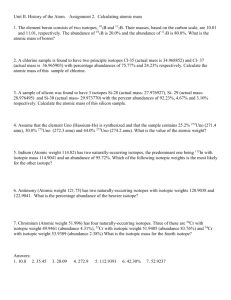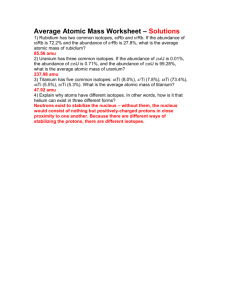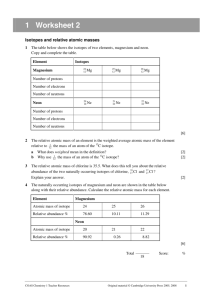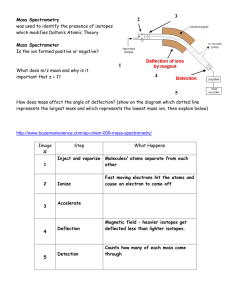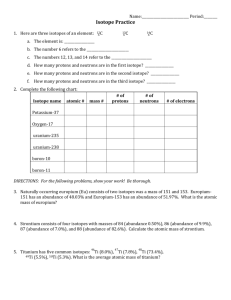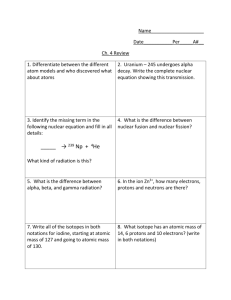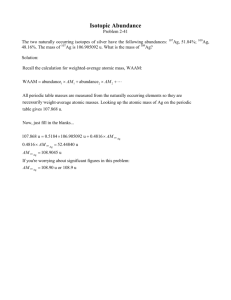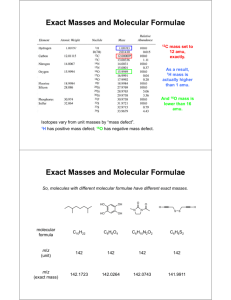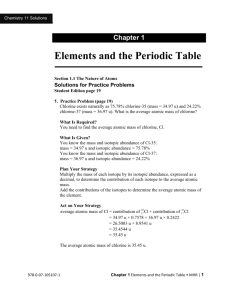Isotopic Abundance: Mass Spec Worksheet for Chemistry
advertisement
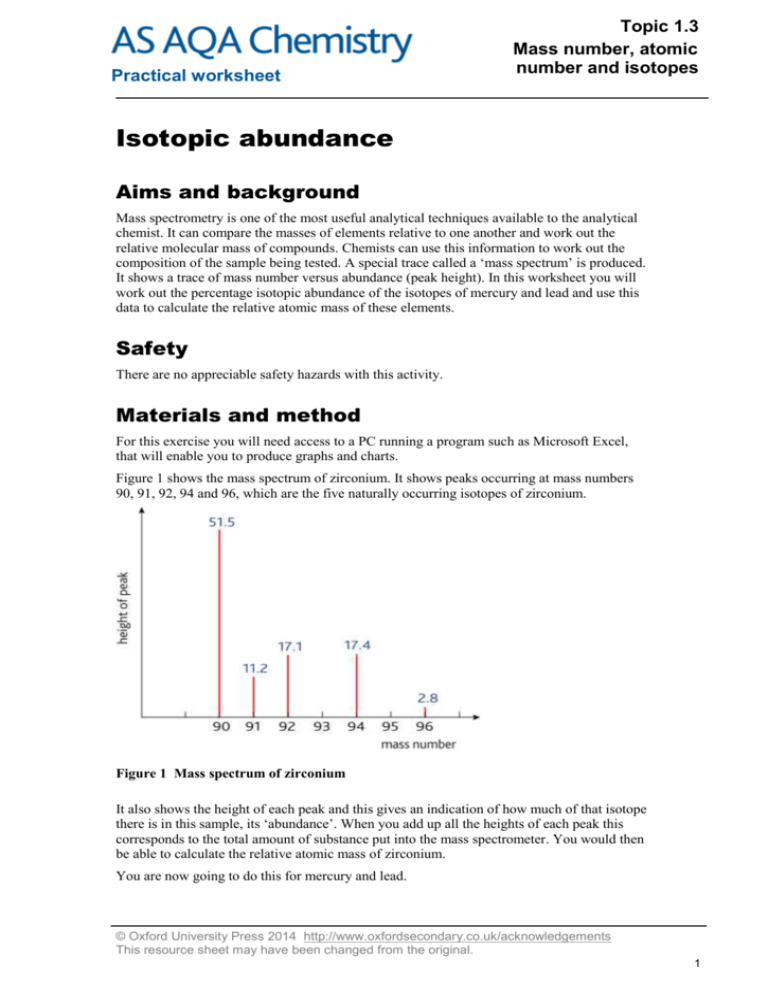
Practical worksheet Topic 1.3 Mass number, atomic number and isotopes Isotopic abundance Aims and background Mass spectrometry is one of the most useful analytical techniques available to the analytical chemist. It can compare the masses of elements relative to one another and work out the relative molecular mass of compounds. Chemists can use this information to work out the composition of the sample being tested. A special trace called a ‘mass spectrum’ is produced. It shows a trace of mass number versus abundance (peak height). In this worksheet you will work out the percentage isotopic abundance of the isotopes of mercury and lead and use this data to calculate the relative atomic mass of these elements. Safety There are no appreciable safety hazards with this activity. Materials and method For this exercise you will need access to a PC running a program such as Microsoft Excel, that will enable you to produce graphs and charts. Figure 1 shows the mass spectrum of zirconium. It shows peaks occurring at mass numbers 90, 91, 92, 94 and 96, which are the five naturally occurring isotopes of zirconium. Figure 1 Mass spectrum of zirconium It also shows the height of each peak and this gives an indication of how much of that isotope there is in this sample, its ‘abundance’. When you add up all the heights of each peak this corresponds to the total amount of substance put into the mass spectrometer. You would then be able to calculate the relative atomic mass of zirconium. You are now going to do this for mercury and lead. © Oxford University Press 2014 http://www.oxfordsecondary.co.uk/acknowledgements This resource sheet may have been changed from the original. 1 Topic 1.3 Mass number, atomic number and isotopes Practical worksheet 1 The table below provides mass spectrometer data for mercury. For each line of data, work out the percentage isotopic abundance by using the following formula: % abundance = peak height ÷ total height of all the peaks 100 2 Work out the relative atomic mass of mercury by multiplying the mass number by the percentage isotopic abundance for each isotope. 3 Add them together to get the final mass. Mass number Peak height /mm % abundance Mass of isotope in sample 196 0.6 198 40.1 199 67.4 200 92.5 201 52.8 202 119.2 204 27.4 400.0 Total peak height Mr of mercury 4 Use Excel or a similar program to present the data graphically, as with the zirconium spectrum above. 5 Repeat the exercise for lead using the table below. Mass number 204 206 207 208 Total peak height Mr of lead Peak height /mm 6.1 94.4 90.4 209.4 400.3 % abundance Mass of isotope in sample Discussion 1 What is the relative atomic mass of mercury? 2 What is the relative atomic mass of lead? 3 The following isotopes of barium have the percentage abundances given in brackets: 130 (0.101%), 132 (0.097%), 134 (2.42%), 135 (6.59%), 136 (7.81%), 137 (11.32%), 138 (71.66%) What is its relative atomic mass? © Oxford University Press 2014 http://www.oxfordsecondary.co.uk/acknowledgements This resource sheet may have been changed from the original. 2

